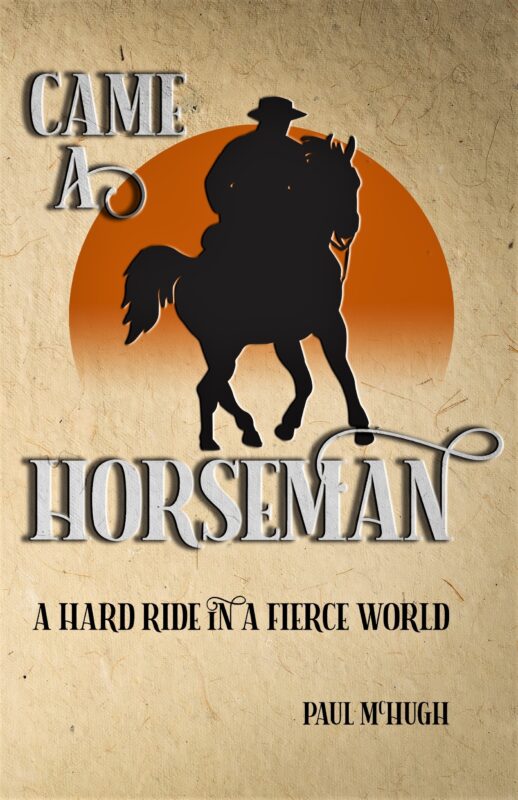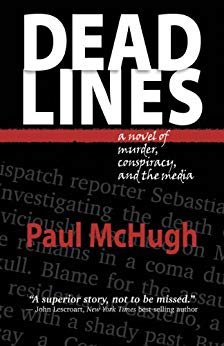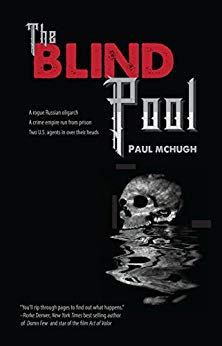The independent Gallery Bookshop is on Main Street, far right, in the seaside village of Mendocino

Christie Olson Day believes if we can bond with books and bookstores as kids, we’ll blaze a trail to a wellspring of stories that can sustain and nurture us throughout life.
This point is one that Olson Day finds herself making often. That’s because she’s an independent bookseller in the town of Mendocino on California’s north coast.

The present battle of small, “indy” bookshop owners like Olson Day to survive and prosper should be a matter of high interest to writers. The relationship between novel scribblers such as myself, indy store managers like her, and the broad range of readers out there is so symbiotic, it might as well be Siamese. Perhaps we’re not all joined at the hip. But in our heads as well as in our hearts, our fates most definitely seem intertwined.
In publishing’s ecosystem, the bonds between book makers, book suppliers, and book fans never amounts to a mere matter of dollars and cents. Only love explains a personal investment in all those long, marginally remunerated days of writing, managing and reading – that joint train of unending hours which keeps this whole enterprise lurching along.
BOOK LOVIN’ IN A TIME OF COVID

Olson Day can tick off big challenges she’s stared down or risen to. That time in 2007, when it looked like e-books were about to eviscerate print-copy sales and decimate brick-and-mortar stores. That time in 2008, when her own store on Main Street in Mendocino caught fire, then she found herself saddled with 30,000 smoke-and-water damaged volumes.
However, onslaught of the 2020 pandemic was the club that truly swatted many booksellers off the fairway and out into the roughs.
“Things looked real scary,” Olson Day told me. “In Mendocino County, the rules kept changing about how we could open, how many people we could serve. For a time, we couldn’t get new books, so inventory began to stagnate. People don’t think about that, but it’s perishable. Not as much as groceries are, but still perishable.
“An upside was that it taught me how to work under pressure without losing my mind.”
Working with her teenage son and staff – and her lists of loyal customers and fans – Olson Day attempted creative solutions. Like grab-bags. Send her $50 or $100 and a few hints about what kind of books you preferred, and she’d make suitable picks from her inventory and send you back a boxful.
“It was interesting to hear what people wanted,” Olson Day said. “Normally, we sell a ton of nonfiction. But readers stuck in quarantine wanted novels, especially mysteries, everything from cozy to gory. A reader’s expressed interest could be general, or specific. ‘Some historical fiction, but not too scary, and please, nothing where any animals have to die.’”
YES, IT DOES TAKE A VILLAGE
Other parts of her survival solution included scoring a small-business boost from the federal government, leniency from landlords, and even outright donations – “Some local people just turned their stimulus checks over to us,” Olson Day said, in a tone warmed by wonder and gratitude.

That’s the sort of thing that can occur in a small town, where everyone knows you, when you’ve kept a bookstore open through thick and thin for 16 years – after working as an employee at that establishment for the previous eight years. (Olson Day bought The Gallery from her former boss Tony Miksak in 2006. Olson Day is the third owner of the 60-year-old establishment.) People admire your commitment and your contribution to the local cultural life. They tend to do whatever they can to help it keep going, since it benefits them individually as well as their entire town.
Nowadays, Olson Day said, the ecosystem for independent bookselling has spread far beyond the town borders, going coast-to-coast within America. Using networks established by regional and national bookseller associations, owners and managers put their heads together to suss out joint solutions to putting books back into the hands of readers amid a time of greatly reduced foot traffic and prolonged home quarantine. They also map out strategies to outflank online behemoths like Amazon.

Indy tactics have included ramping up their own online sale services, creating virtual Zoom author appearances, getting special editions not available elsewhere, and launching special promotions that deliver signed copies through the mail. And – always – trying to put a distinctive personal touch on service to readers.
A ROLE FOR WRITERS IN INDIES
Writers can have roles to play in the survival of independent bookstores if they wish, Olson Day said.
“It’s great when authors draw new business to our stores,” said Olson Day. “We feel incredibly grateful when an author with a big platform uses that to help out. But you know, authors with smaller platforms can help us too. It doesn’t have to be a million people that you attract, it can be only fifty. Everything adds up.

“Nobody needs to drive new business to Amazon. No matter what happens, they’ll continue to do just fine. But when you use your contacts to drive new business to an independent bookstore, it can make a genuine difference there.”
Some measures Olson Day suggests that writers take: recommending that your readers purchase your newest book from your favorite store; supplying exclusive special editions and signed copies to stores; and participating in Zoomed readings for a network of stores.
In other words, build and invest in a two-way relationship. Because it then can continue onward in a third direction – fanning out to a store’s loyal customer base.
In a 2014 interview with a local newspaper, the Anderson Valley Advertiser, Olson Day said, independent bookstores do offer an added value. “To be able to come into the store, to look at books, to be near other people, to talk about books with other people… that has great value and is worth paying for.”

She concedes that such a conversation must now be mostly virtual. Yet one day soon, she expects traditional store operations shall return, enhanced by the recent ordeal. “Someday, we’ll be able to have people standing shoulder-to-shoulder in our stores again and chatting in our aisles.
“A retail storefront actually is an incredibly efficient machine, a great way for people to discover books. It was a challenge for us to learn how to switch over to working more like an online warehouse. But as we come out of this experience, we’ll realize we now have far fewer constraints on our model. I believe we can bounce back stronger than ever, after all we’ve gone through.”
WHERE IT ALL BEGINS

Olson Day cherishes her own early memories of falling in love with books. Walking with her mother to The Book Bag store in Woodinville Washington (gone now) and visiting the bookstore’s cat, with the charming name of Macmillan. She also recalls going to the independent University bookstore at the University of Washington (founded way back in 1900 and still going strong today).
She recalls her childhood favorites. One was, “Frog and Toad are Friends,” by Arnold Lobel. “I thought I’d really hit the big time, reading a book that had actual chapters! Of course, some were only three pages long. Still, I felt very accomplished.”
Another was “Lightfoot The Deer,” by Thornton Burgess. “It opened a window on a different realm for me. I felt I was really learning about the trials and tribulations of a deer in the wild.”
I share with her my own early adored volumes, “My Friend Flicka,” “Old Yeller,” and “The Black Stallion.”
And for a moment we hang out there together, in that warm, quiet and safe space where kids’ books rule, and your childhood seems ablaze with vivid imaginings and replete with prospects for adventure.

When I ask her if the Gallery Bookshop will make any special offers for Christmas this year, Olson Day mentions one. It’s a program called Book Angels, launched by Tony Miksak, that’s flourished for decades. Names and descriptions of area children are given to the store by teachers, parents, and charitable groups, agencies and organizations. Customers can go online and buy a book that fits that child’s needs and desires, and the store will wrap it and send it to them as a gift.
Feeling generous? Want to nurture a new generation of readers? Check it out: https://www.gallerybookshop.com/you-can-be-book-angel-0
A CONCLUDING UNCORPORATE POSTSCRIPT
I can’t resist a temptation to close by citing The Gallery Bookshop’s mission statement. Olson Day crafted it one weekend morning, early in her tenure. She’d felt distressed by seeing mission statements that focused solely on fiscal aspects of business. She hoped to come up with something radically different. She did.
“Our Gallery Bookshop Manifesto
WE BELIEVE IN THE BOOK. We believe in quieting the noise and listening to the stories. We believe in traveling far and wide between paper pages. We believe in touching the words, scribbling in the margins, and dogging the ears. We believe in surrounding ourselves with books long finished and books not yet read; in revisiting our younger selves each time we pull old favorites off the shelf.
We believe in five-year-olds inking their names in big letters on the flyleaf. We believe in becoming someone else for four hundred pages. We believe in turning off the screens and unplugging the networks once in a while. We believe in meeting the author, reading the footnotes, looking up the words and checking the references. We believe in holding our children on our laps and turning the pages together.
We believe in standing shoulder to shoulder in comfortable silence with our fellow citizens before a good shelf of books; we believe in talking face to face with friends and strangers in the aisles of a good bookstore. We believe that together, readers, writers, books and bookstores can work magic.
If you believe, please join us: SAVE THE WORLD. BUY A BOOK.”









